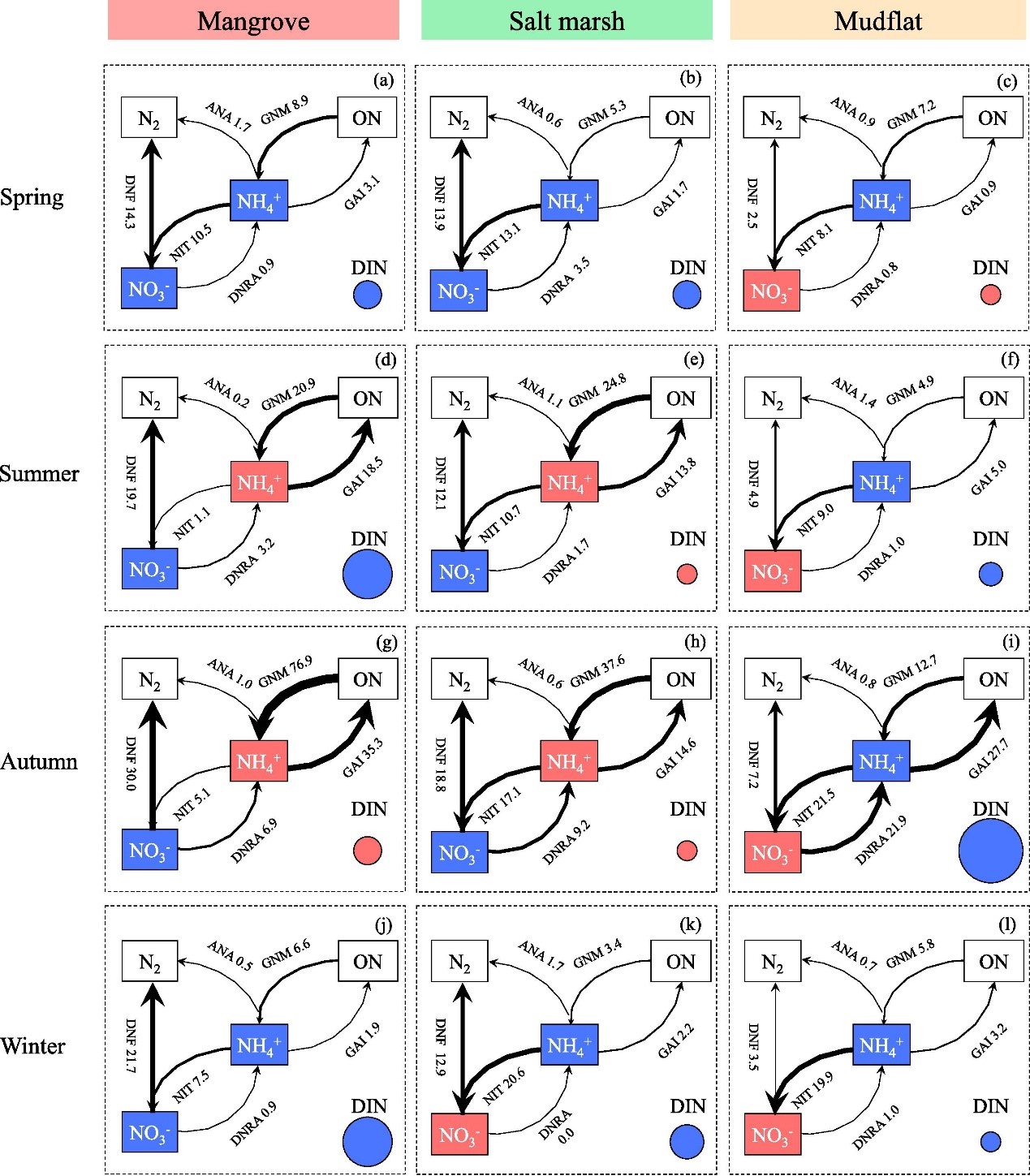Wang F.; Lu Z.; Tobias C.R.; Wang Y.; Xiao K.; Yu Q.; Lin J.; Huang G. and Chen N. 2023. Catena 232.
Salt marsh (Spartina alterniflora) has been rapidly encroaching into mangrove wetlands worldwide. However, the potential effects of salt marsh expansion on coastal nitrogen cycling and ecosystem function remain unclear. In this study, sediment cores were seasonally collected from mangroves, salt marshes and mudflats from 2020 to 2021 to assess their nitrogen cycling. Nitrogen transformation rates of mineralization, immobilization, nitrification, denitrification, anaerobic ammonium oxidization (anammox), and dissimilatory nitrate reduction to ammonium (DNRA) were determined using 15N isotope tracer techniques. Rate measurements were paired with analysis of physicochemical properties, carbon isotopes, and nitrogen functional genes. The results showed that compared to mangrove sediments, salt marsh sediments mostly exhibited lower mineralization and denitrification rates but higher nitrification rates. Mudflat sediments had the lowest mineralization and denitrification rates among the studied habitats, while the nitrification rates were close to those of salt marshes. The differences in carbon quantity and source, nitrogen gene abundances, and carbon and nitrogen substrate availabilities controlled the variations in nitrogen transformation rates. The balance of these rates was used to indicate the net nitrogen retention or removal capacity of the three habitats. On an annual scale, salt marshes exhibited ammonium (NH4+-N) removal while mangroves had net NH4+-N retention. Nitrate (NO3--N) was removed both in salt marsh and mangrove sediments with larger removal capacity in mangroves. Salt marsh sediments had lower NH4+-N removal but higher NO3--N removal levels than mudflat sediments. In summary, salt marsh invasion decreased the overall nitrogen removal levels in the mangrove-mudflat wetland. The future scenarios of increasing salt marsh coverage suggest a decreased removal of nitrogen loads, which has important implications for mitigating coastal eutrophication.

The retention (red) or removal (blue) of NH4+-N, NO3--N (rectangles) and DIN (circles) in the mangrove, salt marsh and mudflat sediments in May (spring, a-c), July (summer, d-f), November (autumn, g-i) 2020, and January (winter, j-l) 2021, which were calculated from the average nitrogen transformation rates in the surface and bottom sediments. The line thicknesses of the black arrows and data next to the lines indicate the transformation rates (μmol N kg−1 h−1) of mineralization (GNM), immobilization (GAI), denitrification (DNF), anammox (ANA), dissimilatory nitrate reduction to ammonium (DNRA), and nitrification (NIT).

